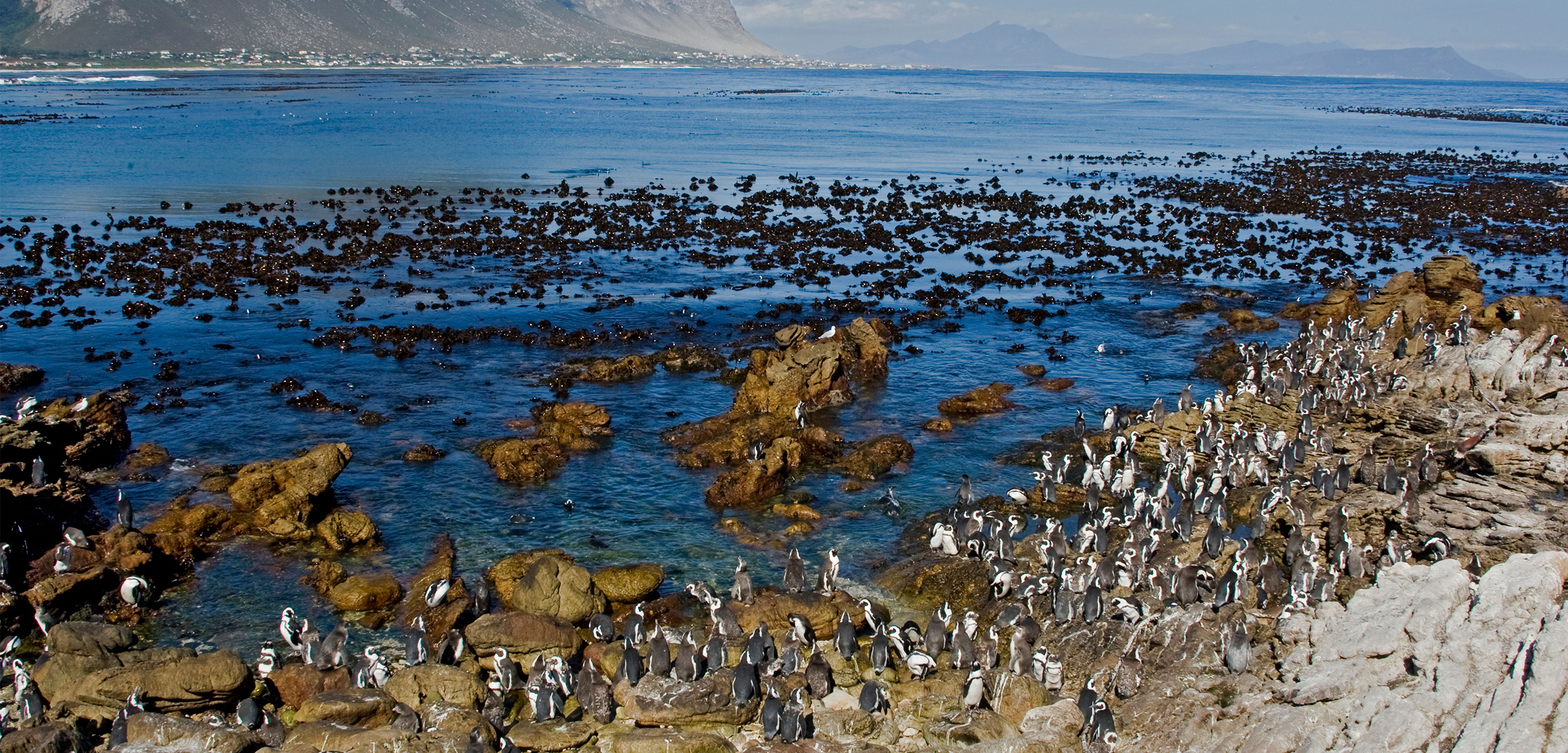South Africa Is Taking a Huge Swing to Save Its Imperiled Penguins
The question now is, Will it work?
Article body copy
A century ago, as many as two million African penguins flourished on the rocky shores of what we now call South Africa and Namibia. There, the chilly Atlantic Ocean encounters the warm Indian Ocean, causing an explosion of nutrient-rich water and the proliferation of small oily fish like sardines and anchovies—the birds’ favorite prey.
Today, the situation is dramatically different. The currents are still flowing and the nutrients are still abundant, but the fish schools have crashed, as have African penguins, which today number just 20,000. Without some sort of intervention, scientists project that these critically endangered penguins will be extinct in the wild by 2035.
This past summer, Barbara Creecy, South Africa’s minister of forestry, fisheries, and the environment, stepped in and extended a temporary ban on fishing near penguin colonies for at least 10 years, a bid to help the penguins find enough prey. The ban, first instituted in September 2022, was a desperate effort to halt the penguins’ decline. An independent expert panel has been watching closely since to evaluate whether the evidence is strong enough to support permanent closures. And in August, the panel announced that limiting fishing around the penguin colonies makes a difference, albeit a tiny one.
The decade-long ban is the minister’s response to long-running concerns that have pitted conservationists against fishers. Yet neither camp seems particularly happy with the outcome. The community has until January 15, 2024, to offer new proposals to protect both penguins and fishers’ livelihoods. Otherwise, the limitations will continue until 2033.
There’s a good reason this ban is so contentious. At a fundamental level, scientists aren’t sure it will make a big enough difference to save the African penguin.
Scientists have been studying the penguins’ plight for decades, but they don’t know precisely why penguin numbers have plummeted. It could be that adult penguins have low survival rates, that chicks are dying young, that parents aren’t breeding successfully, or a combination of these factors.
There are several other possible explanations that also have nothing to do with the birds competing with South Africa’s fishers. In some colonies, for instance, predators such as kelp gulls and feral cats eat penguin eggs and kill chicks. Observations made in 2004, 2006, and 2007 show Cape fur seals killing about seven percent of the adult penguins on Dyer Island, South Africa.
Previous research does show that the penguin populations struggle when sardine stocks are low, but that work didn’t prove that low sardine numbers actually cause the penguin’s decline. (That said, sardine stocks are at their lowest levels in decades.) And, there’s no clear link between the birds’ survival and the size of the anchovy stock—another detail that appears to undermine concerns over competition with fisheries.
The best evidence that competition for prey is to blame stems from a series of experiments which began in 2008, when the government started closing sardine and anchovy fishing within 20 kilometers of four of the largest penguin breeding colonies. The benefits for penguins were modest: their populations grew, but only by about one percent.
Yet the penguins’ situation is now so dire, says Ashley Naidoo, who leads ocean and coastal research in the South African Department of Forestry, Fisheries, and the Environment, that the government has decided that even these small gains are worth it.
“It’s a messy solution in a messy set of circumstances with uncertain data,” says Naidoo, who has been brokering discussions between the different parties. “But you cannot ignore the trend line in the penguin population.”
The decision to close the fishery does not come lightly. South Africa is a biodiverse country, and the government has a responsibility to protect its wildlife, Naidoo says. But, he adds, “We are also a country … with one of the highest unemployment rates in the world.”
South Africa’s fishers, too, are suffering from a scarcity of fish. Though the ban preserves fishers’ total allowable catch, meaning they can go on catching just as many fish as before, it restricts their ability to harvest near six important penguin colonies. Given that penguins live near some of the country’s most prized fishing grounds, the closures have cut fishers off from a rich source of income.
Mike Copeland, who chairs the South African Pelagic Fishing Industry Association, says the extended closures will have a widespread economic effect on fishers, fisheries workers, and community members where they live. Given all the uncertainty, he hopes “there will be increased efforts to try and pinpoint the main drivers” of the birds’ decline, “and to ameliorate those where possible.”
Conservationists are not entirely happy with the fisheries closures either. Alistair McInnes, the seabird conservation program manager at the nonprofit BirdLife South Africa, says that while the closure areas are welcome, they’re in the wrong spots.
“We’re still working with government and fisheries to try and get those lines right,” he says. “At the moment, they are not representative of the [penguins’] core foraging areas.” As currently drawn, he adds, the fisheries closures are unlikely to take much pressure off the penguins.
But time is rapidly running out for African penguins. Even though the closure gains are small and neither side is happy about the intervention, there’s a chance the ban could help protect the species from imminent extinction. “Government’s role,” says Naidoo, “is to act on what you can act on.”
South Africa’s situation will become more common in the years ahead. Around the world, humans and other species are in direct competition for resources, from prey to habitat. But ecosystems are complex, and there is much that scientists still don’t know. Making decisions in such an uncertain environment is tricky and will only become more difficult as climate change adds even more unknowns. For species living on the edge of extinction, policymakers will increasingly have to act—even if their evidence is imperfect.

